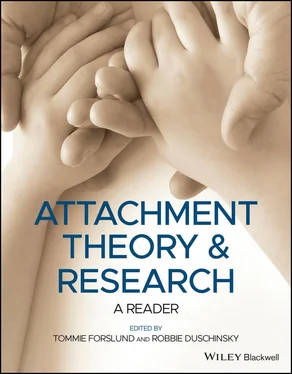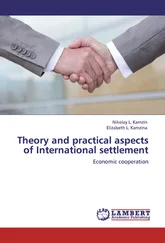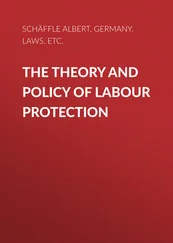49 Hinde, R. A. (1954a) Factors governing the changes in strength of a partially inborn response. Proceedings of the Royal Society, B 142, 306–331
50 Hinde, R. A. (1954b) Changes in responsiveness to a constant stimulus. British Journal of Animal Behaviour, 2, 41–55
51 Hug‐Hellmuth, H. Von ([1913] 1919) A Study of the Mental Life of the Child. Washington: Nervous and Mental Disease Pub. Co.
52 James, W. (1890) A Textbook of Psychology. New York: Holt
53 Johnson, A. M., Falstein, E. I., Szurek, S. A., & Svensden, M. (1941) School phobia. American Journal of Orthopsychiatry, 11, 702–711
54 Jones, E. ([1927] 1948) The early development of female sexuality. In: Papers on Psycho‐Analysis. 5th edn., London: Baillire
55 Jones, E. ([1929] 1948) Fear, guilt and hate. In: Papers on Psycho‐Analysis. 5th edn., London: Baillire
56 Kellogg, W. N., & Kellogg, L. A. (1933) The Ape and the Child. New York: Whittlesey
57 Klein, M. (1932) The Psycho‐Analysis of Children. London: Hogarth
58 Klein, M. ([1935] 1952) A contribution to the psychogenesis of manic‐depressive states. In: M. Klein, P. Heimann, S. Isaacs & J. Riviere (Eds.). Developments in Psycho‐Analysis, London: Hogarth
59 Klein, M., & Riviere, J. (1937). Love, Hate, and Reparation: Two Lectures. London: Hogarth Press
60 Kris, E. (1956) The recovery of childhood memories in psychoanalysis. Psychoanalytic Study of the Child, 11, 54–88
61 Levy, D. (1937) Primary affect hunger. American Journal of Psychiatry, 94, 643–52
62 Liddell, H. (1950) Some specific factors that modify tolerance for environmental stress. In: H. C. Wolff, S. G. WolffJr. & C. C. Hare, (Eds.). Life Stress and Bodily Disease. New York: Association for Research in Nervous and Mental Disease
63 Lorenz, K. Z. (1950) The comparative method in studying innate behaviour patterns. In: Physiological Mechanisms in Animal Behaviour. No. IV of Symposia of the Society for Experimental Biology. London: Cambridge University Press
64 McDougall, W. (1923) An Outline of Psychology. London: Methuen
65 Odier, C. ([1948] 1956) Anxiety and Magic Thinking. New York: International Universities Press
66 Prugh, D., Staub, E. M., Sands, H. H., Kirschbaum, R. M. & Lenihan, E. A. (1953) Study of emotional reactions of children and families to hospitalization and illness. American Journal of Orthopsychiatry, 23, 70–106
67 Rank, O. ([1924] 1929) The Trauma of Birth. London: Kegan Paul
68 Robertson, J. (1953a) Film: ‘A Two‐Year‐Old Goes to Hospital’. London: Tavistock Child Development Research Unit
69 Robertson, J. (1953b) Some responses of young children to the loss of maternal care. Nursing Times, April 1953, 382–386
70 Robertson, J. (1958) Film: ‘Going to Hospital with Mother’. London: Tavistock Child Development Research Unit
71 Robertson, J. & Bowlby, J. (1952) Responses of young children to separation from their mothers. Courrier de la Centre Internationale de l’Enfance, 2, 131–142
72 Schaffer, H. R. (1958) Objective Observations of Personality Development in Early Infancy British Journal of Medical Psychology 31, 174–183
73 Schaffer, H. R. & Callender, W. M. (1959) Psychological effects of hospitalization in infancy. Pediatrics 24, 528–539
74 Spitz, R.A. (1946) Anaclitic depression. Psychoanalytic Study of the Child, 2, 313–341
75 Spitz, R.A. (1950) Anxiety in infancy: a study of its manifestations in the first year of life. International Journal of Psychoanalysis, 31, 138–143
76 Stendler, C. B. (1954) Possible causes of overdependency in young children. Child Development, 25, 125–146
77 Suttie, I. D. (1935) The Origins of Love and Hate. London: Kegan Paul
78 Thorpe, W. H. (1950) The concepts of learning and their relation to those of instinct. In: Physiological Mechanisms in Animal Behaviour. Symposium IV of S.E.B. London: Cambridge University Press
79 Winnicott, D. W. (1953). Psychoses and child care. British Journal of Medical Psychology, 26 (1), 68–74
80 Yerkes, R. M. (1943) Chimpanzees: A Laboratory Colony. New Haven: Yale University Press
81 Yerkes, R. M. & Yerkes, A. W. (1936) Nature and conditions of avoidance (fear) response in chimpanzees. Journal of Comparative Psychology, 21, 53–66
82 Zetzel, E. R. (1955) The concept of anxiety in relation to the development of psycho‐analysis. Journal of the American Psychoanalytic Association, 3, 369–388
1 1An abbreviated version of this paper was read before the British Psycho‐Analytical Society on 5 November, 1958.
2 2Although in this paper I shall usually refer to mothers, it is to be understood that in every case I am concerned with the person who mothers the child and to whom he becomes attached, rather than to the natural mother.
3 3This account is adapted from those given in Robertson and Bowlby (1952) and Robertson (1953a).
4 4In the previous paper and the early drafts of this one the term ‘denial’ was used to denote the third phase. The problem of terminology is discussed more fully after the phase of detachment has been described.
5 5As explained in my previous paper (Bowlby 1958), ‘the terms primary and secondary refer to whether the response is built‐in and inherited or acquired through the process of learning.’
6 6See section ‘Ingredients of Separation Anxiety’ below.
7 7For this abridged version a critical examination of psycho‐analytical theories relating to separation anxiety has been omitted. It is being published as a separate paper: Bowlby, J. (1960). Separation anxiety: A critical review of the literature. Journal of Child Psychology and Psychiatry, 1 (4), 251–269.
8 8In an earlier paper (Bowlby 1957) I have used the term ‘instinctual response’ to refer both to the behaviour and to the hypothetical internal structure which, when activated, is presumed to lead to the behaviour. To avoid this confusion I am now using the term ‘instinctual response system’ for the hypothetical internal structure, and limiting the term ‘instinctual response’ to the active behavioural response, including both the motor behaviour pattern and its physiological and psychological concomitants.
9 9A similar view, though coupled with a materially different theory of instinct, was advanced by McDougall (1923).
10 10The possibility that a single emotion, fright, may accompany more than one instinctual response system suggests that Lorenz’s hypothesis that each response is accompanied by an emotional state peculiar to itself may need modification.
11 11See the discussion by Thorpe (1950, p. 390). Several workers (e.g. Hinde 1954a) have shown that, paradoxically, strangeness evokes both escape and curiosity, and that there is a complex balance between the two competing response systems.
12 12Such situations have been termed ‘consummatory situations’ by Bastock, Morris and Moynihan (1953) and by Hinde (1954b). In my view, however, partly because of the usefulness of the verb ‘to terminate’, a preferable term is ‘terminating situation’.
13 13‘The tendency for instinctual responses to be directed towards a particular individual or group of individuals and not promiscuously towards many’ (Bowlby (1958, p. 370).
14 14The term ‘haven of safety’ has been introduced by Harlow and Zimmermann (1958). In describing their very interesting experiments with rhesus monkeys they write: ‘One function of the real mother, human or sub‐human, and presumably of a mother surrogate, is to provide a haven of safety for the infant in times of fear or danger.’ See also Harlow (1958).
15 15The secondary drive theory, which they invoke to account for the child’s tie to his mother and for separation anxiety, is not necessary to an interpretation of their data.
Читать дальше












